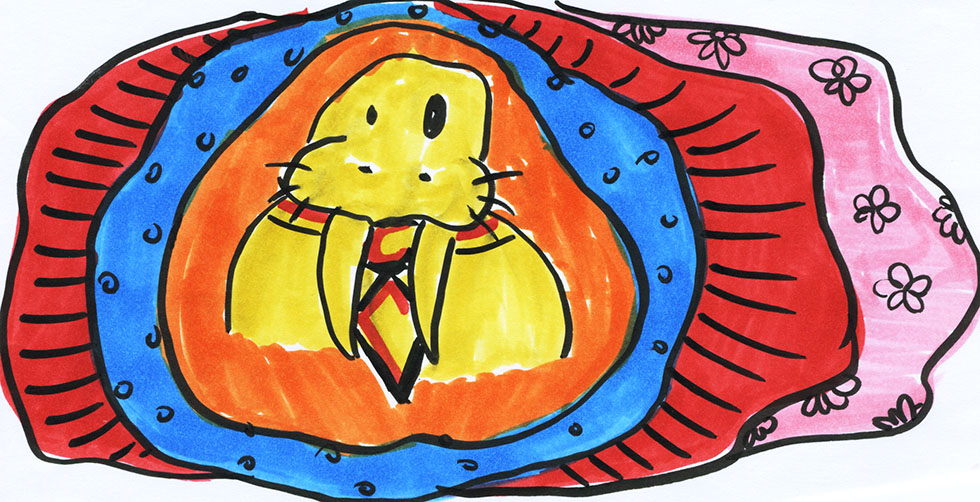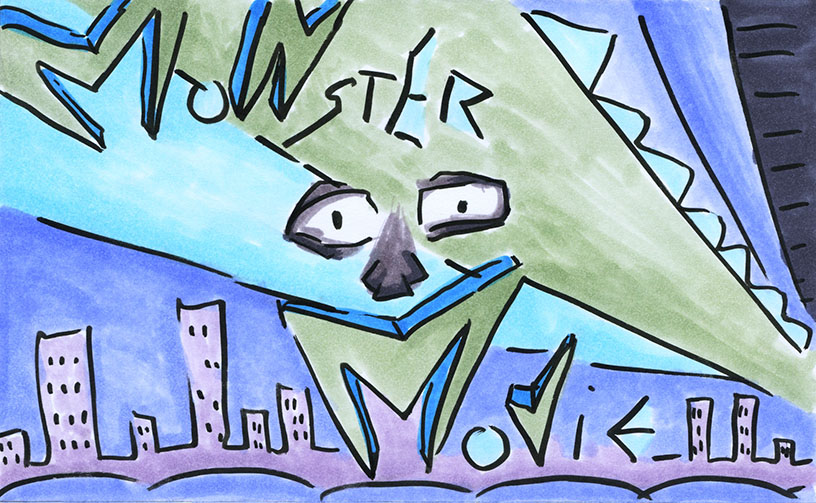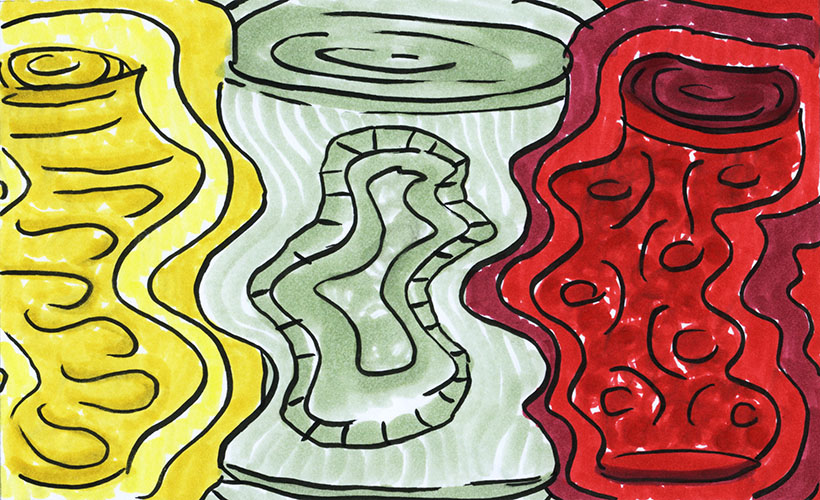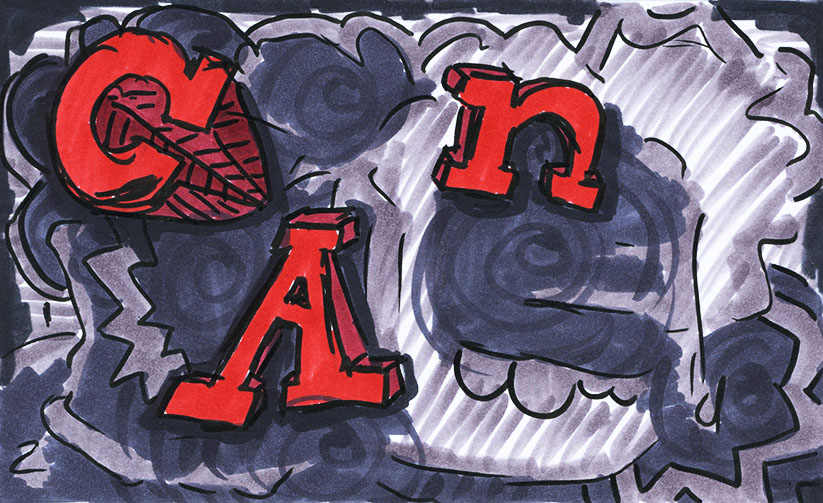August, 1969.
Things are changing, and they’re changing fast. Awash with Marxism, drugs and joss sticks, young people across Germany are growing increasingly resistant to the no-questions-asked materialism of post-war culture. New and experimental communes like Kommune 1 are spreading across the country, and playing home to an emerging intelligentsia with sometimes violent revolutionary ideas.
Within and against this backdrop, a group of German oddballs have just released their first album. It was taped in a downstairs room of a castle they’d hustled from an associate, and the band had only their instruments, a couple of microphones and some faulty amplifiers to their name. With their first attempt rejected as too “uncommercial,” the now label-less group could only afford to print 500 copies of their new LP.
Even in a scene founded on hallucination and freakiness, Can were a fairly unusual bunch. While the hippies never trusted anyone over 30, three-fifths of the group were now running past their 20s. The others weren’t quite normal, either. One was an ex-law student, and the other an African American draft dodger who hadn’t sung since high school. But this group of weirdos were no three-chord amateurs when it came to music.
Whilst most bands in the ’60s emerged from a steady wave of garages and high school practice rooms, the three thirty-somethings of Can had all been respected members of Germany’s musical elite. Their keyboardist and bassist, Irmin Schmidt and Holger Czukay, were students of the great avant-garde composer Stockhausen, and their drummer, Jaki Liebezeit, cut his chops as one of the nation’s fiercest jazz drummers. And though they may have envisioned comfortable futures in Cologne’s concert halls and Musikschules, the 1960s had different ideas.
Schmidt’s epiphany came on a 1966 visit to New York. Where the Germans were “very strict” and caught up in “serious music,” New York’s avant-garde scene of pop artists, junkie musicians and Fluxus experimentalists cared little for the separations of “high” and “low” culture. “There was no barrier people were only interested in whether music was wild and interesting and beautiful.”
Czukay’s epiphany, interestingly enough, came from the band’s future guitarist Michael Karoli. Karoli was one of Czukay’s music students and his devoted appreciation for The Beatles annoyed his teacher no end. Czukay simply wasn’t interested in the mass-media populism of chart music. In the lingo of the time, The Beatles may very well have seemed like schlager — empty, vapid, without meaning and an appeal to culture’s lowest common denominators. His skepticism of the Fabs couldn’t last forever, though.
Little did Czukay know that the “arrogant, really arrogant” Beatlemaniac Karoli “was trying to teach something about music.”
“He knew something that I didn’t know.”
Released in the early autumn of 1967, “I Am The Walrus” marked another extraordinary leap for a band that had made musical inventiveness its calling card. Even to this day, John Lennon’s acid-fried visions of crabalockers, eggmen and corporation tee-shirts remain completely compelling, and especially when compared to the twee, pop-singed dualities of its A-side, “Hello Goodbye.” One can only imagine which Lennon lyric sent Czukay over the edge that day, but something changed his outlook forever.

“How can they make something like that? It sounds sometimes more [akin] to Stockhausen than to The Beatles!”
Liebezeit, the band’s soon-to-be drummer, had made his name on the German free jazz scene, whose leading lights took inspiration from American chaoticists like Albert Ayler, Cecil Taylor and John Coltrane. Liebezeit was soon growing tired of this freedom, though, and perhaps it’s easy to see why.
Take a listen to Alexander von Schlippenbach’s 1967 release, Globe Unity, for example, on which Liebezeit takes the drum stool. It’s unique, interesting, nightmarish, and provocative, but also a damned pain to listen to. And as with other extreme records of the era, it only validated the criticisms that conservatives offered towards the avant-garde, and further severed jazz’s then-tenuous links with popular audiences.
It was after one particular jazz show in the late ’60s when Liebezeit had his flash. He was approached by a man acting rather oddly — “a kind of freak” perhaps tripping on hallucinogens, perhaps in a manic state, but otherwise obviously wrecked by something. Whatever it was, this man was insistent on giving the drummer a particular piece of advice.
“You must play . . . monotonous.”
Whether Liebezeit had indulged, too, we don’t know. But he certainly understood the man’s message.
Czukay and Schmidt — soon joined by their monotony-centered drummer — didn’t take long to leave behind their elitist protections. Michael Karoli, the Beatles-digging ace guitarist from earlier, jumped on board, too. And on the addition of Malcolm Mooney — a draft-evading sculptor Schmidt met in Italy — the band’s core line-up would be complete. Allegedly christening themselves after an acronym of “Communism, Anarchism and Nihilism,” the band were intent on nothing less than creating “instantaneous composition,” or the music of true spontaneity.
Like the members of the group themselves, the music wasn’t too disposed towards popularity, either. It’s noisy, dirty, screechy, and sometimes impenetrably difficult, and all in a time when the German charts were uniquely resistant to difficulty. Their DJs played American and British bands and German bands inspired by Americans and British ones, and where some originality was attempted, it was often intoxicatingly poppy. The saccharine ballads of Schlagermusik, for example, were later so despised that the genre became a wholesale term of musical abuse.
With a backstory like this, you’d expect the album to be largely forgotten. Its four songs should probably have ended up as mere psychedelic curios, buried either in compilation CDs or obscure Spotify playlists. But things didn’t happen this way.
The album — Monster Movie by Can — was soon sold out in a mass of hype and critical interest. Picked up by Liberty Records in the US, it was spread across Europe and the US mainland to rave reviews and a reexamining of Anglo-American dominance. Long after its good luck should have run out, a new generation of music fans and rock enthusiasts are discovering it every decade. And whether it be in the rapid-fire drums of Joy Division, the free-form experiments of Public Image Ltd., the expansive simplicity of Stereolab or even the drum-machine stylings of Gorillaz and trip hop, Can is a band whose influence is almost unbound by genre.

In the annals of music history, though, this album scarcely seems to merit a mention. Where it’s discussed at all, Monster Movie is often presented as a merely good — not excellent, just good — release by a group that would go on to far more ascendant peaks. While other genius debuts like Are You Experienced? and The Doors receive a hallowed welcome in the rock canon, Monster Movie is always conspicuously absent.
Tago Mago and Ege Bamyasi may be Can’s most popular albums, but they could only have been so effective within a context first set by their debut. In the manic psychosis of “You Doo Right” and “Father Cannot Yell,” the corrupted blues of “Outside My Door,” and the card-carrying psych of “Mary, Mary . . . ,” we see a band finding — and in many ways already having found — the unique sound that would define them. It’s weird. It’s complicated. It’s beautiful. It’s sometimes downright ugly. And it needs your attention fast.
Looking at their copies of Monster Movie for the first time, those 500 young Germans could be forgiven for missing the group’s rather esoteric aims. The liner notes are strange and border almost on maniacal, with their free-form affirmations of “a new line” and “modern (he)art beat,” and their declared identity as “full of prejudice no “crazy swinging effects,” talented young people.” The album’s cover — adorned with a Marvel supervillain without any real context — is fairly inscrutable, too.
As they placed the needle on the groove, though, it’s clear that their puzzlement was only just beginning. “Father Cannot Yell,” Monster Movie’s first track, opens like an alarm clock on speed. Ringing out like Morse code sirens, Schmidt’s organ soon meets with a bizarre wash of dissonant walking bass, manic spoken word, and guitar scratchings. Malcolm Mooney, the group’s draft dodger poet, mumbles and screams like a crazed hyena. He doesn’t really make much sense, but he certainly seems to think otherwise.
For the more musically conscious of the 500, “Father Cannot Yell” may have sounded a bit like the Velvet Underground. But then only just a bit. While its industrial chug and meandering bass may recall “European Son,” the whole track is simply far too psychedelic (and well-produced) to be considered a mere descendant. Where the Velvets play over narcotic beds of bluesy vocals and guitar jitter, “Father Cannot Yell” brings to mind something entirely more paranoid. It only really has one chord, but Can’s disordered playing makes the song run on the constant verge of self destruction.
Resolution and cadence didn’t mean much to Can. Even today, it’s hard to think of more than a few groups that’d be willing to groove on two dissonant bass tones and a double track of percussive sighs for over one and a half minutes. They even hint at some resolution with a melodic descending bass line, but this crumb of comfort is terrifyingly short-lived. By the sixth minute, the squawks of noise and proto-electronica have now built into a relentless, driving monolith. Hinting more at the stresses of psychosis than a psychedelic ecstasy, “Father Cannot Yell” is a song that avoids the easy games of conventional dope rock.
The song isn’t a mess, though. It may actually be the opposite. Almost wholly from start to finish, that amphetamine organ note rings faithfully. The drums pound steadily. Lyrical themes re-emerge and repeat. And where the guitar does change chords (however briefly), that same note is still there ringing out underneath. It may sound shaky, but it’s a house of cards built by sheer repetition.
It’s just as well that repetition and restriction were core elements of Can’s musical philosophy. Calling it no less than the “mother of musical invention.” the band’s innovation was to broaden restriction and the drone into an all-encompassing texture of their sound. Artists like The Beatles, John Coltrane, and Miles Davis had all experimented with drones, but their approach was actually rather limited. Behind the pseudo-Indian sheen of tamboura buzzes and sustained bass notes, jazz musicians especially used the drone as an instrument of convenience, since staying on “the one” freed soloists from meeting dynamic chord changes in their playing.

What Can did, though, was expand the drone into the entire centrepiece of a song. Lyrics, melody and key are up-turned, explored and recast, and all against the hypnotic motorik pulse of Liebezeit’s drums. Far and away from the rack-chopping virtuosity of Keith Moon and John Bonham, later songs like “Mother Sky,” “Don’t Turn The Light On . . . ,” and “Mushroom” do away with complex fills and rat-a-tat syncopation. Like a drum machine made of flesh and blood, Liebezeit’s droning snare shots and hi-hat snaps sound simultaneously primal and utterly futuristic.
Monster Movie’s final track, “You Doo Right,” is perhaps the LP’s holy text in their philosophy of restriction. Running at over 20 minutes long and taking up an entire side of vinyl, “You Doo Right” is likely the stand-out composition of the entire record.
Accompanied by a distant mist of delayed guitar, the curtain opens to a steady march of tom-tom smacks and octave leaping bass. Mooney’s delivery begins conventionally enough. Two minutes in, though, it seems he’s been saying the same set of lyrics over and over again. They don’t even seem especially profound. But the more he calls on himself to “move on, man, man, you’ve got to move on, man,” the more his fairly banal lyrics take on the sacral quality of a devotional mantra.
With each cycle of Mooney’s kirtan, the track’s droning field expands and contracts in intense waves. Joined by new jolts of djembe drum leads and Hendrixian riffing, Can’s improvisational excellence offers a suitably hypnotic backdrop to Mooney’s shamanic sermon. So hypnotic are they, in fact, that the track soon seems like a fly on the wall to a man caught in tribal ecstasy.
His vocals shift spasmodically from clean melodicism to subdued whispers and occasionally lapse into demented James Brown scratches. Trapped in the one-pointedness of his love-letter mantra, Mooney’s delivery sometimes seems borderline-delirious. After a particularly compelling duet of jazz drums and plodding bass, for example, his stuttering vocal brings to mind a man either being shocked with electricity or in the midst of an epileptic attack.
Monster Movie’s second track, “Mary, Mary, So Contrary,” offers a more straight-edged take on ’60s psychedelia. Based almost entirely on a word-for-word reading of a traditional English nursery rhyme, the song’s hard-rock sound seems miles from the gnomic whimsy of most psychedelic nostalgia. Unlike the “scribbly black” of Syd Barrett and the “childhood visions” of Kaleidoscope, Can’s infant-retrospective features none of the era’s twinkling, whimsical overtones. It sidesteps the wistful melodies and Anglo-affected vocals in favor of a plain and simple rock, powered by hard-hitting snare shots and textures of melodic fuzz. This is Can we’re talking about, though, so there will be some weirdness sprinkled in, too. (What the hell is a “haiku cigarette,” and why does Mooney say he’s smoking one?)
Can weren’t interested in copy-catting. German music had simply done it for too long. Traumatised by the war and brainwashed by consumerism, many young Germans found notions of a true German culture, or Volksmusik, worryingly nationalistic, or just plainly uncomfortable. And given the embarrassing results of the Schlagermusik, it was simply safer not to bother.
Can hated Germany’s recent past as much as anyone. But this unfortunate history offered no excuse to erase the entirety of a culture, especially when so much of it was actively persecuted by the Nazi regime. Expressionism, Dadaism, and Modernism, for instance, were all rubbished as nothing more than “entartete kunst,” or “degenerate art.” The avant-garde experiments of the Weimar Republic were condemned as propaganda pieces for Jews and Communists. Their paintings were even humiliated in dressing-down gallery sessions, where families and foreign dignitaries were invited to gawp at their corruption.

For all its claims to “deNazification,” then, the German culture’s lapse into tired bluesings and copycat RnB seemed the musical equivalent of “forgive and forget.” And in recasting the defamed artists of the past, Can could deal the Nazi legacy a tangible blow.
As with the noise-rock outings of “Father Cannot Yell,” “Outside My Door” likewise suggests a strong influence from the German Expressionists. Intent on capturing pure emotion and sidestepping any and all objective standards, the Expressionists offered a new and surreal palette for Can’s droning “return to roots.” As if relishing in their independence from Anglo-American supremacy, the song’s Expressionist character even seems to offer a parodic rejoinder to standard blues, as well as a more jarring take on psychedelia’s usually wide-eyed appetite for the mystical.
Far and away from the standard sitar twang and Harrison-styled proselytising, Mooney’s bluesing rendition of the Tao Te Ching is markedly less deferential. Packaged with harp bursts and chromatic riffs, he soon decays into semi-lucid mumbles and even exorcistic throat shedding. In Chapter five of his great text, Lao Tzu claims that “the five colours blind the eyes, and the five tones deafen the ear.” Under Mooney’s interpretation, its subtle message becomes slightly less concise. “I don’t know if that’s good or bad / ‘For five colours will make the ears blind,’ Jaki said that.”
The song’s guitar solo is hardly white boy blues, either. Absent of the pentatonic clichés that beset most rock, Karoli’s solo recalls less an attempt at Lightnin’ Hopkins and more a DIY attempt at the Austrian atonalists. Rather than finalising with a neat scalar flourish, Karoli decides to sustain a single note for over an entire minute. But whether or not Can were really offering a parody is beside the point. All that mattered for them was to sound different. Germany wasn’t the USA or the UK, and they knew it. They wanted other people to know it, too.
And even if Monster Movie had proved Can’s only release, it would certainly have its own unique place in the rock canon. An oddly recognisable mix of old and new, the record harks to the past and envisions boldly to the future. It’s the Velvet Underground and Nico on acid. It’s Are You Experienced? with Schoenberg on lead. It’s Piper at The Gates of Dawn with an added dose of trauma. It’s utterly strange, and totally compelling.
Thankfully for us, though, Monster Movie was just the beginning of Can’s musical quest. Like an olive branch to their prospective audience — especially after having their first record turned down — the LP offers an accessibly prophetic look at the increasing extremes towards which Can would head in their later records. If you want more of the same minimalism, dissonance, nonsense, and card-carrying rock, look no further than Tago Mago and Ege Bamyasi, Can’s most popular and acclaimed records. And if you want to see where it all started, there’s literally no other place to go than Monster Movie.
On its release, the most immediate effect of the album was a total revitalisation of the fledgling German music scene. Turned on to the possibilities of genuinely original composition, a new wave of German bands did away with the hackneyed thirds and redundant fuzz of Western rock.
Eventually christened “Krautrock,” this highly influential movement — including bands like Kraftwerk, NEU! and Amon Düül II — played on a kaleidoscopic mix of repetition, sonic texture and pioneering technology, and pay ultimate thanks to Can’s initial experiments on Monster Movie.
Within and without the Krautrock it helped to birth, whole generations of future musicians lay the credit for their development at Can’s now-hallowed feet. They returned to music’s true roots — both formal and experiential — and dared to be different. They couldn’t help but change a music scene badly in need of fresh ideas. But whether Can ever fulfilled their promise of a “birth of new line . . . modern (he)art beat — THE CAN new way of music,” we won’t ever know. We’d have to work out what that means first. •




